Religion Ismaili Muslim | Name Aga IV Role Business magnate | |
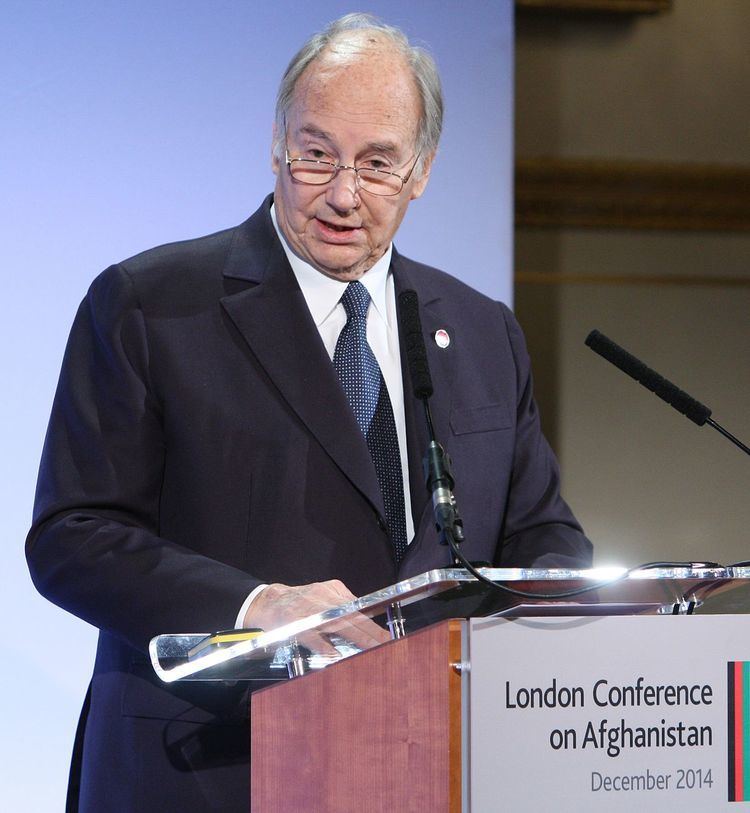 | ||
Parents Joan Yarde-Buller, Prince Aly Khan Children Rahim Aga Khan, Zahra Aga Khan, Hussain Aga Khan, Prince Aly Muhammad Aga Khan Siblings Yasmin Aga Khan, Prince Amyn Aga Khan, Patrick Benjamin Guinness Similar People Aga Khan III, Prince Aly Khan, Rahim Aga Khan, Inaara Aga Khan, Salimah Aga Khan | ||
His highness prince karim aga khan iv arrives in germany berlin
Prince Shah Karim Al Hussaini, Aga Khan IV, KBE, CC (Arabic: شاه كريم الحسيني، الآغاخان الرابع; Persian: شاه کریم حسینی، آقاخان چهارم; Urdu: شاه کریم حسینی، آغاخان چهارم; Aga Khan is also transliterated as Aqa Khan and Agha Khan; born 13 December 1936) is the 49th and current Imam of Nizari Ismailism, a denomination of Isma'ilism within Shia Islam consisting of an estimated 25 million adherents (about 20% of the world's Shia Muslim population). The Aga Khan is a British business magnate, racehorse owner and breeder. He has held this position of Imam, under the title of Aga Khan IV, since 11 July 1957, when, at the age of 20, he succeeded his grandfather, Sir Sultan Muhammad Shah Aga Khan III. It is believed that the Aga Khan is a direct lineal descendant of the Islamic prophet Muhammad through Muhammad's cousin and son-in-law, Ali, considered the first Imam in Shia Islam, and Ali's wife Fatima az-Zahra, Muhammad’s daughter from his first marriage. In 1986 the Aga Khan ordained the current version of the Ismailia Constitution – an ecclesiastical decree affirming to Nizari Ismailis his "sole right to interpret the Qur'an and provide authoritative guidance on [all] matters of faith" and formalising his sole discretion, power and authority for the governance of Nizari Ismaili jamats (places of worship) and institutions.
Contents
- His highness prince karim aga khan iv arrives in germany berlin
- Aga Khan IV Wikipedia audio article
- Early life
- Marriages
- Ascension to Nizari Ismaili Imamat
- Nizari Ismaili Imamat
- The Status of the Imam in Nizari Ismailism
- Silver Jubilee Year of Imamat
- Golden Jubilee Year of Imamat
- Diamond Jubilee Year of Imamat
- Aga Khan Development Network
- Promotion of Islamic architecture
- Personal finances
- Thoroughbred horse racing
- Yacht Alamshar
- Titles and styles
- Honours
- Honorary degrees
- Awards
- References
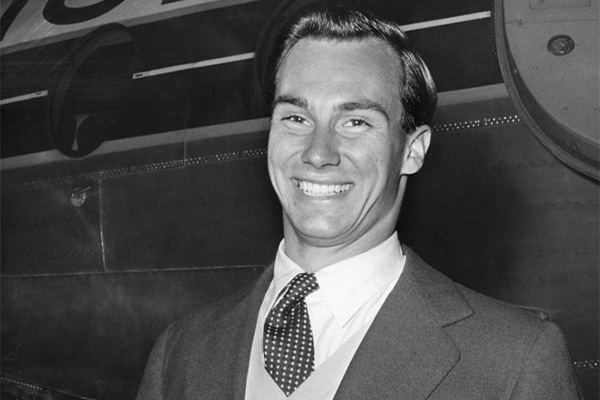
Forbes describes the Aga Khan as one of the world's ten richest royals with an estimated net worth of US$800 million (2010). Additionally he is unique among the richest royals as he does not rule over a geographic territory. Among the goals the Aga Khan has said he works toward are the elimination of global poverty; the promotion and implementation of secular pluralism; the advancement of the status of women; and the honouring of Islamic art and architecture. He is the founder and chairman of the Aga Khan Development Network, one of the largest private development networks in the world. The organisation has said it works toward improvement of the environment, health, education, architecture, culture, microfinance, rural development, disaster reduction, the promotion of private-sector enterprise and the revitalisation of historic cities. Since his ascension to the Imamate of Nizari Ismailis in 1957, the Aga Khan has been involved in complex political and economic changes which have affected his Nizari Ismaili followers, including the independence of African countries from colonial rule, expulsion of Asians from Uganda, the independence of Central Asian countries such as Tajikistan from the former Soviet Union and the continuous turmoil in Afghanistan and Pakistan. Aga Khan IV became the first faith leader to address the Joint Session of the Canadian Parliament on 27 February 2014.
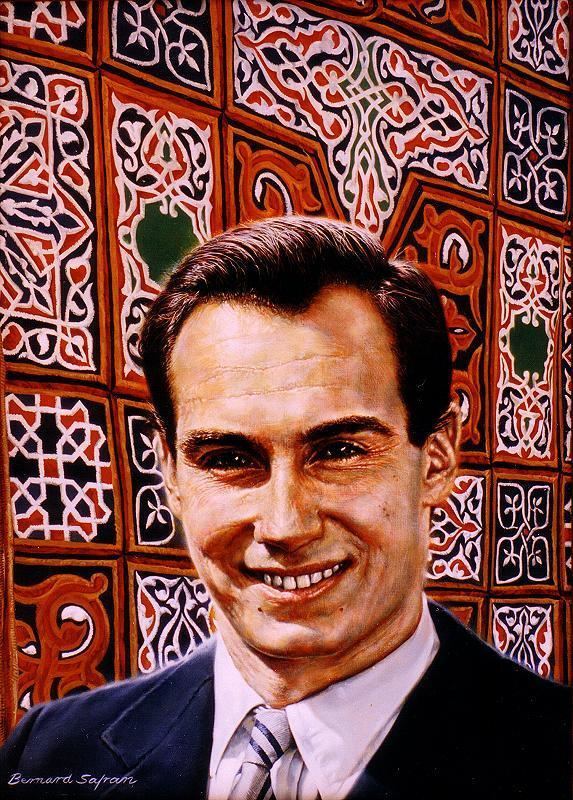
Aga Khan IV | Wikipedia audio article
Early life
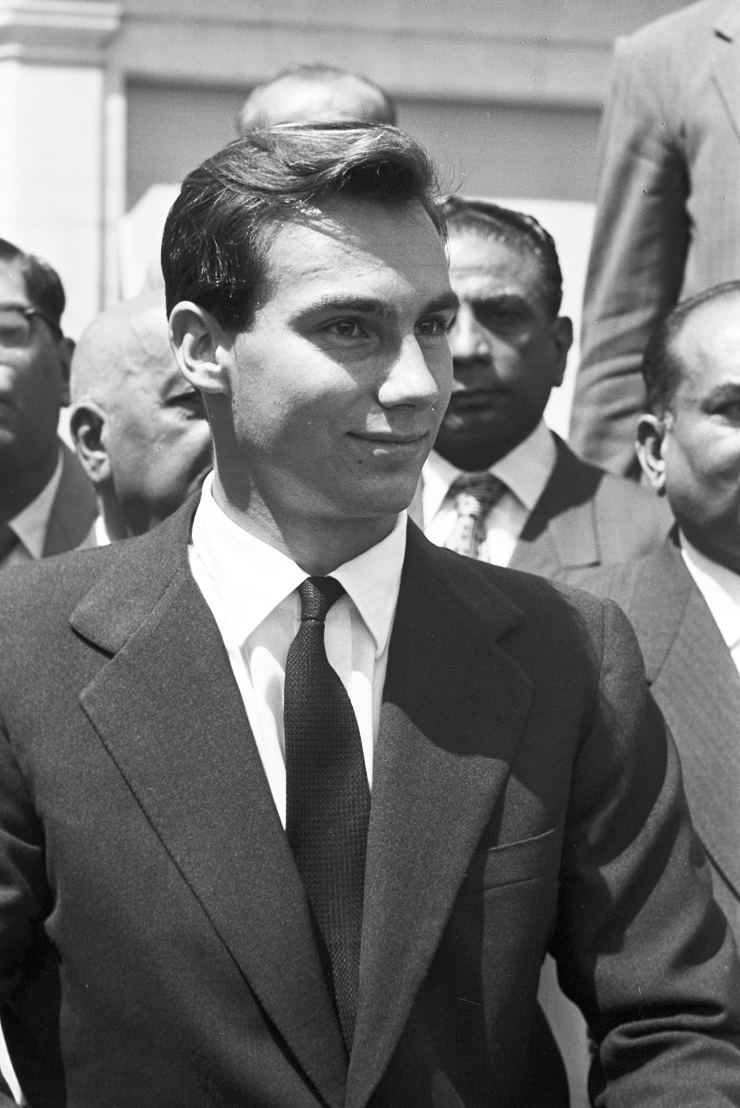
Born Prince Karim Aga Khan, the Aga Khan IV is the eldest son of Prince Aly Khan (1911–1960), and his first wife, the Hon. Princess Tajuddawlah Aly Khan, formerly the Hon. Joan Barbara Yarde-Buller (1908–1997), the eldest daughter of British peer 3rd Baron Churston.

Born in Geneva, Switzerland, on 13 December 1936, Prince Karim was declared healthy despite being born prematurely. The Aga Khan's brother, Prince Amyn, was born less than a year later. Their parents divorced in 1949, in part due to Prince Aly Khan's extramarital affairs, and Prince Aly Khan shortly after married American actress Rita Hayworth – with whom he had a daughter, Princess Yasmin Aga Khan, the half-sister of Aga Khan IV.
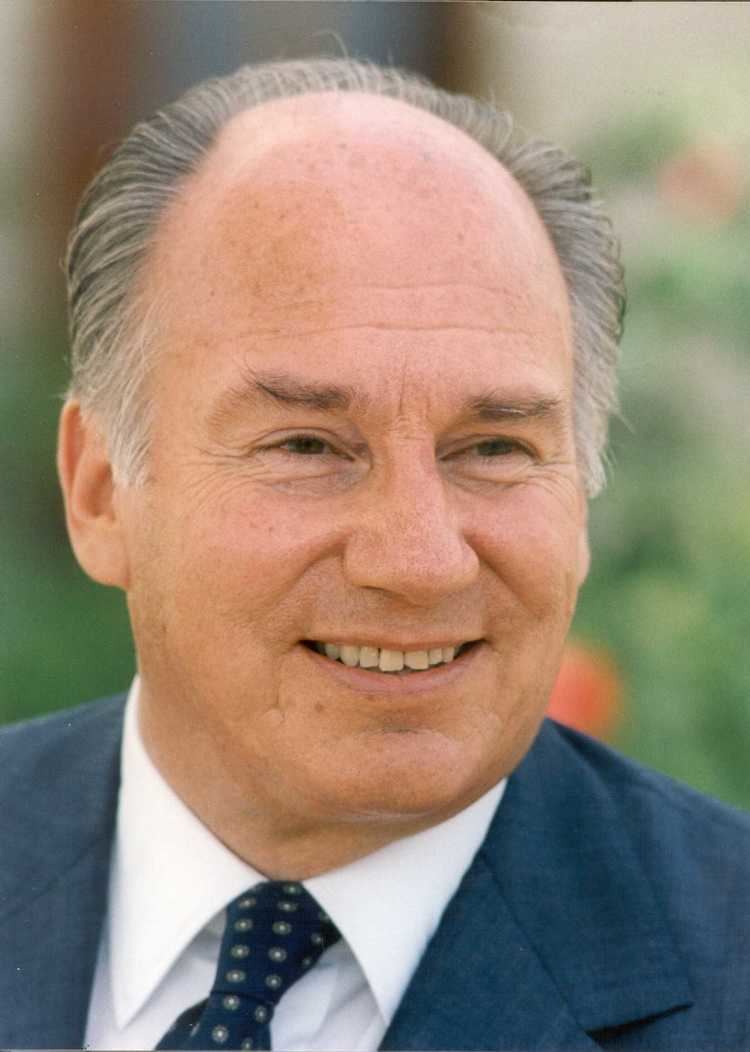
The Aga Khan IV also had a half-brother, Patrick Benjamin Guinness (1931–1965), from his mother's first marriage, as Joan Yarde-Buller was previously married to Loel Guinness of the banking Guinnesses.
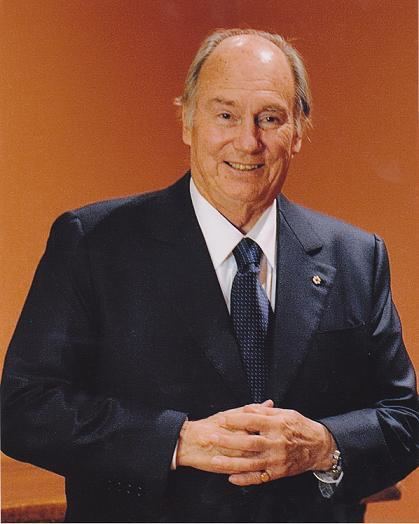
Prince Karim spent his childhood in Nairobi, Kenya, where his early education was done by private tutoring. His grandfather, Aga Khan III, engaged Mustafa Kamil, a teacher from Aligarh Muslim University, for both Prince Karim and Prince Amyn. Prince Karim later attended the Institut Le Rosey in Switzerland, the most expensive boarding school in Europe, for nine years where he ended up with, in his words, "fair grades." As a youngster Prince Karim would have preferred to attend MIT and study science, but his grandfather, Aga Khan III, vetoed the decision and Prince Karim attended Harvard University where he was elected a member of The Delphic Club. There, he switched to majoring in History after failing an engineering course.
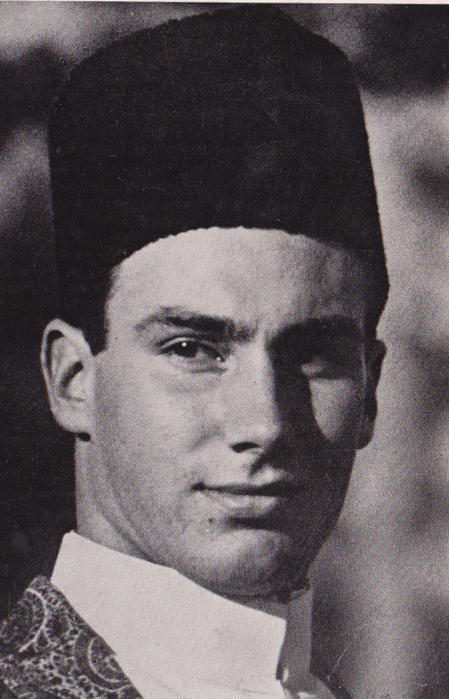
When his grandfather died, the young Prince was thrust into the position of the Aga Khan (IV), and he went from being not only a university student but also to replacing his grandfather as the new Nizari Ismaili Imam. He says about it: "Overnight, my whole life changed completely. I woke up with serious responsibilities toward millions of other human beings. I knew I would have to abandon my hopes of studying for a doctorate in History." The Aga Khan IV graduated from Harvard in 1959, two years after becoming the Imam of the Nizari Ismailis, with a Bachelor of Arts degree in History (with Cum Laude honors) and his varsity H for soccer.
The young Aga Khan was a competitive downhill skier, and he skied for Iran (at that time led by the secular Shah) in the 1964 Olympic Games. Riots broke out in East Africa during the time of the games and the Aga Khan was accordingly besieged with cables and questions from East African Nizari Ismaili leaders, some of whom had flown to Innsbruck, asking their imam for guidance as to whether they should try to hold on to their interests in East Africa or instead return to India and Pakistan.
Paul Ress, of Sports Illustrated, wrote that the young, contact lens wearing Prince turned Aga Khan IV, having responsibility to go with his wealth, did not live the playboy lifestyle of his father. He did, however, relish "...speed on water as well as on snow, highways and in the air..." and increased the speed of his 72-foot yacht (the Amaloun) by almost 20%. After being named Aga Khan the young prince, who habitually drove at 90 to 145 miles an hour, noted he could no longer afford to risk his life on a piste [ski run]. Ress wrote about traveling to Chantilly in one of the young Prince's Maseratis. The chauffeur, Lucien Lemouss, slowed to 80 miles per hour as they fell in behind a slower moving Ferrari, and the young Prince had the chauffeur pull over, took over the driver's seat, and swiftly passed the Ferrari.
The young Aga Khan, who at times was followed by paparazzi, discussed his privacy:
I take all sorts of precautions when I go out with friends. I have taught myself not to show any emotion in public places. I never sit next to a woman with whom the press is trying to link me. Here in Gstaad I go often to a bistro outside the village for a fondue because the proprietor will not let anyone take pictures in his establishment. I stopped going to certain Paris theatres because I discovered they were tipping off the press to my presence. I realise that I may seem extreme on the subject, but do not forget that my mail has been stolen and my servants bribed. Close personal friends have taken private snapshots of me in my home and then sold them to magazines. I have been blackmailed on the telephone. All I desire is to have my private life respected. Is that unreasonable?
Marriages
The Aga Khan married his first wife, former British model Sarah ("Sally") Frances Croker-Poole, who assumed the name Begum Salimah Aga Khan, on 22 October 1969 (civil) and 28 October 1969 (religious), at his home (at that time) in Paris, France. The couple were married for 25 years, during which they had three children. Not many years into the marriage, they filed for divorce. By 1984, the Aga Khan and Begum Salimah took to separate lives. However, their marriage did not officially end by divorce until eleven years later, in 1995. The Aga Khan and Begum Salimah had one daughter and two sons together:
The Aga Khan married for the second time with Princess Gabriele of Leiningen, who assumed the name Begum Inaara Aga Khan, at his walled compound and chateau, Aiglemont, in Gouvieux, France, on 30 May 1998. However, a little over six years later – on 8 October 2004 – an announcement was made that the Aga Khan and Begum Inaara were to seek a divorce. In September 2011, a divorce settlement was reached in French courts. The divorce settlement amount was agreed to by both the Aga Khan and the Begum in March 2014. By Begum Inaara, the Aga Khan has a son:
Ascension to Nizari Ismaili Imamat
Following the death of his grandfather the Aga Khan III, Prince Karim, at the age of 20, became the 49th Imam of the Nizari Ismailis and Aga Khan IV, bypassing his father, Prince Aly Khan, and his uncle, Prince Sadruddin Aga Khan, who were in direct line to succession. In his will, the Aga Khan III explained the rationale for choosing his eldest grandson as his successor (which marked the second time in the claimed history of the Nizari Ismaili chain of Imamat that a grandson of the preceding Imam – instead of one of the sons of the preceding Imam – was made the next Imam):
In view of the fundamentally altered conditions in the world has provoked many changes, including the discoveries of atomic science, I am convinced that it is in the best interests of the Nizari Ismaili community that I should be succeeded by a young man who has been brought up and developed during recent years and in the midst of the new age, and who brings a new outlook on life to his office.
In light of his grandfather's will, the Aga Khan IV has sometimes been referred to by Nizari Ismailis as the "Imam of the Atomic Age." The will of the Aga Khan III added that the next Aga Khan, in the first several years of his Imamat, should look to the Aga Khan III's widow for guidance on general matters pertaining to the Imamat:
I DESIRE that my successor shall, during the first seven years of his Imamat, be guided on questions of general Imamat Policy, by my said wife, Yvette called Yve Blanche Labrousse Om Habibeh, the BEGUM AGA KHAN, who has been familiar for many years with the problems facing my followers, and in whose wise judgment, I place the greatest confidence.
Nizari Ismaili Imamat
Upon taking the position of Imam, the Aga Khan IV stated that he intended to continue the work his grandfather had pursued in building modern institutions to improve the quality of life of the Nizari Ismailis. Takht nashini (installation of the new Imam) ceremonies occurred at several locations over the course of 1957 and 1958. During this time, the Aga Khan emphasised to his followers the importance of fostering positive relations with different ethnicities – a message highly appropriate considering the racially tense atmosphere in East Africa at the time between blacks and South Asians. During the Aga Khan's installation ceremonies in the Indian subcontinent, the Aga Khan stressed his commitment to improving the standard of living of Nizari Ismailis and encouraged co-operation with individuals of other religions. The main themes that the Aga Khan emphasised to his community during these first few months of his Imamat were material development, education, interracial harmony, and confidence in religion.
In 1972, under the regime of President Idi Amin of Uganda, people of South Asian origin, including Nizari Ismailis, were expelled. The South Asians, some of whose families had lived in Uganda for over 100 years, were given 90 days to leave the country. The Aga Khan phoned his long-time friend Canadian Prime Minister Pierre Trudeau. Trudeau's government agreed to allow thousands of Nizari Ismailis to immigrate to Canada. The Aga Khan also undertook urgent steps to facilitate the resettlement of Nizari Ismailis displaced from Uganda, Tanzania, Kenya, and Burma, to other countries. Most of these Nizari Ismailis found new homes in Asia, Europe and North America. Most of the initial resettlement problems were overcome remarkably rapidly by Nizari Ismailis due to their educational backgrounds and high rates of literacy, as well as the efforts of the Aga Khan and the host countries, and moral and material support from Nizari Ismaili community programs.
The Aga Khan has encouraged Nizari Ismailis settled in the industrialised world to contribute towards the progress of communities in the developing world through various development programs. He has described his role as Imam as being partly to uplift the material and spiritual wellbeing of Nizari Ismailis – a duty which requires an understanding of Nizari Ismailis in the context of their geographic location and their time. He elaborated on this concept in a 2006 speech in Germany, saying "The role and responsibility of an Imam, therefore, is both to interpret the faith to the community, and also to do all within his means to improve the quality, and security, of their daily lives and the people with whom Ismailis share their lives." This engagement of the Aga Khan with Nizari Ismailis is said to extend to the people with whom the Nizari Ismailis share their lives, locally and internationally.
The Aga Khan is one of several Shia signatories of the Amman Message which gives a broad foundation for defining those denominations of Islam that should be considered as part of the wider Muslim Ummah.
During the Pope Benedict XVI Islam controversy, he said:
I have two reactions to the pope's lecture: There is my concern about the degradation of relations and, at the same time, I see an opportunity. A chance to talk about a serious, important issue: the relationship between religion and logic.
When the Aga Khan IV was asked about his view on the consumption of alcohol in a 1965 interview with The Sunday Times, he said, in line with Muslim teaching:
Our belief is that the thing which separates man from the animals is his power of thought. Anything that impedes this process is wrong. Therefore, alcohol is forbidden. I have never touched alcohol. But this, to me, is not a puritan prohibition. I don't want to drink. I've never wanted to drink. There's no pressure being placed on me by my religion.
The Status of the Imam in Nizari Ismailism
The Ismailis are a community of Shi'a Islam, and their theology is derived from the teachings of the early Shi'i Imams – 'Ali ibn Abi Talib, Muhammad al-Baqir and Ja'far al-Sadiq. According to early Shi'i Ismaili theology, God or Allah is absolutely transcendent and unique. Unlike Sunni theology where God's Essence is conjoined to eternal attributes, the early Shi'i Imams emphasized a theology according to which God's Essence is beyond all names and attributes. The first creation of God is a spiritual entity (ruhani) or light (nur) called the Intellect ('Aql), the Light of Muhammad (nur Muhammad) or the Light of Ali. This cosmic Intellect or Light exists prior to the creation of the physical world and is the highest of created beings is identified with the Eternal Imam or the spiritual essence of the Prophet Muhammad and the Shi'i Imams. The historical Imams on earth are the locus of manifestation (mazhar) of the Light (nur) or Intellect (aql). Ismaili philosophers developed these ideas further using Neoplatonic frameworks and identified the Intellect ('Aql) or Light of the Imam with the Universal Intellect (Nous) of Plotinus. Similarly, the Imam's human soul – revered as pure based on Qur'an 33:33 – is regarded as the reflective mirror of the Universal Intellect.
The 1975 Ismailia Association Conference – a meeting of the Aga Khan with senior Nizari Ismaili council leaders from several countries – addressed the question of the status of the Imam. It mentioned:
"The Imam to be explained as the 'mazhar' ["locus of manifestation"] of God, and the relationship between God and the Imam to be related to varying levels of inspiration and communication from God to man." Paris Conference Report
The term mazhar is also used in Sufi literature by Ibn 'Arabi ("Bezels of Wisdom"), Nasir al-Din al-Tusi ("Contemplation and Action", "The Paradise of Submission") and many others. The meaning of the word mazhar denotes the idea of a mirror in which an object is reflected as an image but not incarnate. Similarly, the Imam as mazhar (locus of manifestation, mirror) 'differs greatly' from the idea of incarnation or indwelling (hulul) in which the Divine dwells inside a material body. The Imam is not seen as an incarnation of divinity.
Silver Jubilee Year of Imamat
From 11 July 1982 to 11 July 1983 – to celebrate the present Aga Khan's Silver Jubilee, marking the 25th anniversary of his accession to the Imamat – many new social and economic development projects were launched. These range from the establishment of the US$450 million international Aga Khan University with its Faculty of Health Sciences and teaching hospital based in Karachi, the expansion of schools for girls and medical centres in the Hunza region (one of the remote parts of Northern Pakistan bordering on China and Afghanistan that is densely populated with Nizari Ismailis), to the establishment of the Aga Khan Rural Support Program in Gujarat, India – and the extension of existing urban hospitals and primary health care centres in Tanzania and Kenya.
Golden Jubilee Year of Imamat
11 July 2007 to 13 December 2008 marked the 50th Anniversary of the Aga Khan's reign of Imamat (Golden Jubilee). On this occasion, leaders representing Nizari Ismailis from different areas of the world gathered at the Aga Khan's residence to pay homage to the Imam. As part of the Golden Jubilee, the Aga Khan made official visits to various countries – using the visits to recognise the friendship and longstanding support of certain leaders of state, government, and others, to the Aga Khan and his Nizari Ismaili community, as well as to lay the foundations for certain future initiatives and programmes. Areas of the world visited included the Americas, Europe, Asia, and Africa. The Aga Khan also organised a Nizari Ismaili sports meet in Kenya, and teams of Nizari Ismailis from different areas of the world came to play in this event.
One of the iniatiatives of Golden is Jubilee Games, firstly named as Golden Jubilee Games but continued as Jubliee Games. The first of the event held in Kenya in 2008. The second Jubilee Games were held in Dubai, UAE in July 2016.
Diamond Jubilee Year of Imamat
11 July 2017 to 11 July 2018 has been designated the Diamond Jubilee Year of the Aga Khan's 60th year of reign.
Aga Khan Development Network
The Aga Khan is founder and chairman of the Aga Khan Development Network, which coordinates the activities of over 200 agencies and institutions, employing approximately 80,000 paid staff, the majority of whom are based in developing countries. AKDN is partly funded by his followers and donor partners that include numerous governments and several international organisations. AKDN agencies operate in the fields of health, education, culture, rural development, institution-building and the promotion of economic development, with special focus on countries of the Third World. It is dedicated to improving living conditions and opportunities for the poor, without regard to their faith, origin or sex. The AKDN’s annual budget for non-profit development activities in 2010 was approximately US$625 million. The network operates in more than 35 of the poorest countries in the world.
AKDN includes the Aga Khan University, the University of Central Asia, the for-profit Aga Khan Fund for Economic Development, the Aga Khan Trust for Culture, the Aga Khan Foundation, the Aga Khan Health Services, the Aga Khan Education Services, the Aga Khan Planning and Building Services, and the Aga Khan Agency for Microfinance. One of the companies that the AKFED is the main shareholder of is the famous Serena Hotels Group – a chain of luxury hotels and resorts primarily located in Africa and Asia. Despite the Qur'anic prohibition on alcohol (a prohibition that is accepted by Nizari Ismailis), many of Serena's properties have bars and serve alcohol to guests – including in Muslim nations like Pakistan. The Aga Khan Award for Architecture is the largest architectural award in the world. The Aga Khan is also the chairman of the Board of Governors of the Institute of Ismaili Studies, which he founded in 1977. He is also a Vice-President of the Royal Commonwealth Society.
Focus Humanitarian Assistance, an affiliate of the AKDN, is responsible for emergency response in the face of disaster. Recent disasters that FOCUS was involved in helping address include the 2005 earthquake in Pakistan (AKDN earthquake response) and the South Asian tsunami.
Significant recent or current projects that are related to development and that are being led by the Aga Khan include the Delegation of the Ismaili Imamat and the Global Centre for Pluralism in Ottawa, the Aga Khan Museum in Toronto, the Al-Azhar Park in Cairo, the Bagh-e Babur restoration in Kabul, and a network of full IB residential schools known as the Aga Khan Academies.
The Aga Khan has expressed concern about the work of the AKDN being described as philanthropy. In his address to the Evangelische Akademie Tutzing, when he was awarded their Tolerance Prize in 2006, he described this concern:
Reflecting a certain historical tendency of the West to separate the secular from the religious, they often describe [the work of the AKDN] either as philanthropy or entrepreneurship. What is not understood is that this work is for us a part of our institutional responsibility – it flows from the mandate of the office of Imam to improve the quality of worldly life for the concerned communities.
Promotion of Islamic architecture
In 1977, the Aga Khan established the Aga Khan Award for Architecture, an award recognising excellence in architecture that encompasses contemporary design and social, historical, and environmental considerations. It is the largest architectural award in the world(prize money for which is a million US dollars) and is granted triennially. The award grew out of the Aga Khan’s desire to revitalise creativity in Islamic societies and acknowledge creative solutions for buildings facilities and public spaces. The prize winner is selected by an independent master jury convened for each cycle.
In 1979, Harvard University and the Massachusetts Institute of Technology (MIT) established the Aga Khan Program for Islamic Architecture (AKPIA), which is supported by an endowment from Aga Khan. These programs provide degree courses, public lectures, and conferences for the study of Islamic architecture and urbanism. Understanding contemporary conditions and developmental issues are key components of the academic program. The program engages in research at both institutions and students can graduate with a Master of Science of Architectural Studies specialising in the Aga Khan program from MIT's Department of Architecture.
Personal finances
Forbes describes the Aga Khan as one of the world's ten richest royals, one rank richer than the Sultan of Oman, with an estimated net worth of US$1 billion (2010). Additionally he is unique among the richest royals as he does not preside over a geographic territory. He owns hundreds of racehorses, valuable stud farms, an exclusive yacht club on Sardinia, a private island in the Bahamas, two Bombardier jets, a £100 million high speed yacht Alamshar, named after his prize racehorse, and several estates around the world, with his primary residence at Aiglemont estate in the town of Gouvieux, France, north of Paris. The Aga Khan's philanthropic institutions spend about US$600 million per year – mainly in Africa, Asia, and the Middle East.
The Aga Khan is and has been involved in multiple business ventures, in such areas as communications media and luxury hotels. In 1959 he founded the Kenyan media company Nation Media Group. In the 1990s, the Aga Khan had a group of US$400 a night Italian luxury hotels, called Ciga. Currently the Aga Khan, through his for-profit AKFED, is the largest shareholder in the Serena Hotels chain. The Aga Khan's racing horse businesses bring in considerable income. He owns and operates the largest horse racing and breeding operation in France, the French horse auction house, Arqana, Gilltown Stud near Kilcullen in Ireland, and other breeding/stud farms in Europe.
In 2009, Forbes reported that the Aga Khan's net worth was US$800 million, after a decline of $200 million over the course of the previous year. In 2013, Vanity Fair estimated his fortune to be well over US$1 billion.
Thoroughbred horse racing
At his self-titled estate Aiglemont, in the town of Gouvieux in the Picardy region of France – about 4 kilometres west of the Chantilly Racecourse – the Aga Khan operates the largest horse racing and breeding operation in the country. In 1977, he paid £1.3 million for the bloodstock owned by Anna Dupré and in 1978, £4.7 million for the bloodstock of Marcel Boussac.
The Aga Khan is said to be the France’s most influential owner-breeder and record winner of The Prix de Diane, sometimes referred to as the French Oaks.
The Aga Khan owns Gilltown Stud near Kilcullen, Ireland, and the Haras de Bonneval breeding farm at Le Mesnil-Mauger in France. In March 2005, he purchased the famous Calvados stud farms, the Haras d'Ouilly in Pont-d'Ouilly and the Haras de Val-Henry in Livarot. Haras d'Ouilly had been owned by such famous horsemen as the Duc Decazes, François Dupré and Jean-Luc Lagardère.
In 2006 the Aga Khan became the majority shareholder of French horse auction house Arqana.
On 27 October 2009 it was announced that Sea The Stars, regarded by many as one of the greatest racehorses of all time, would stand stud at the Aga Khan's Gilltown Stud in Ireland.
His unbeaten homebred filly, Zarkava, won the 2008 Prix de l'Arc de Triomphe. His homebred colt, Harzand, won the 2016 Epsom Derby and the 2016 Irish Derby.
Yacht Alamshar
The Aga Khan IV commissioned a 164-foot yacht, named Alamshar, with a price tag of £200 million. It should be noted the cost and maintenance are partly covered by chartering. The yacht is named after a prized racehorse of his, and was supposed to have a top speed of 60 knots as part of his hope of setting a new transatlantic speed record. However, the yacht only reached a top speed of 30 knots in its initial trials.
Titles and styles
The title Prince(ss) is used by the Aga Khans and their children by virtue of their descent from Shah Fath Ali Shah of the Persian Qajar dynasty. The title was officially recognised by the British government in 1938.
Author Farhad Daftary wrote of how the honorific title 'Aga Khan' (from agha and khan) was first given to Aga Khan I at the age of thirteen after the murder of his father: "At the same time, the Qajar monarch bestowed on him the honorific title (laqab) of Agha Khan (also transcribed as Aqa Khan), meaning lord and master." Daftary additionally commented, "The title of Agha Khan remained hereditary amongst his successors." On the other hand, in a legal proceeding, the Aga Khan III noted that 'Aga Khan' is not a title, but, instead a sort of alias or "pet name" that was given to Aga Khan I when he was a young man.
The style of 'His Highness' was formally granted to the Aga Khan IV by Queen Elizabeth II in 1957 upon the death of his grandfather Aga Khan III. The granting of the title to the Aga Khan IV was preceded by a strong expressed desire of the Aga Khan III to see the British monarchy award the non-hereditary title to his successor. The style of His Royal Highness was granted in 1959 to the Aga Khan IV by Mohammad Reza Pahlavi, the Shah of Iran, later overthrown in the Iranian Revolution of 1979, but he uses instead His Highness. Over the years, the Aga Khan has received numerous honours, honorary degrees, and awards.
